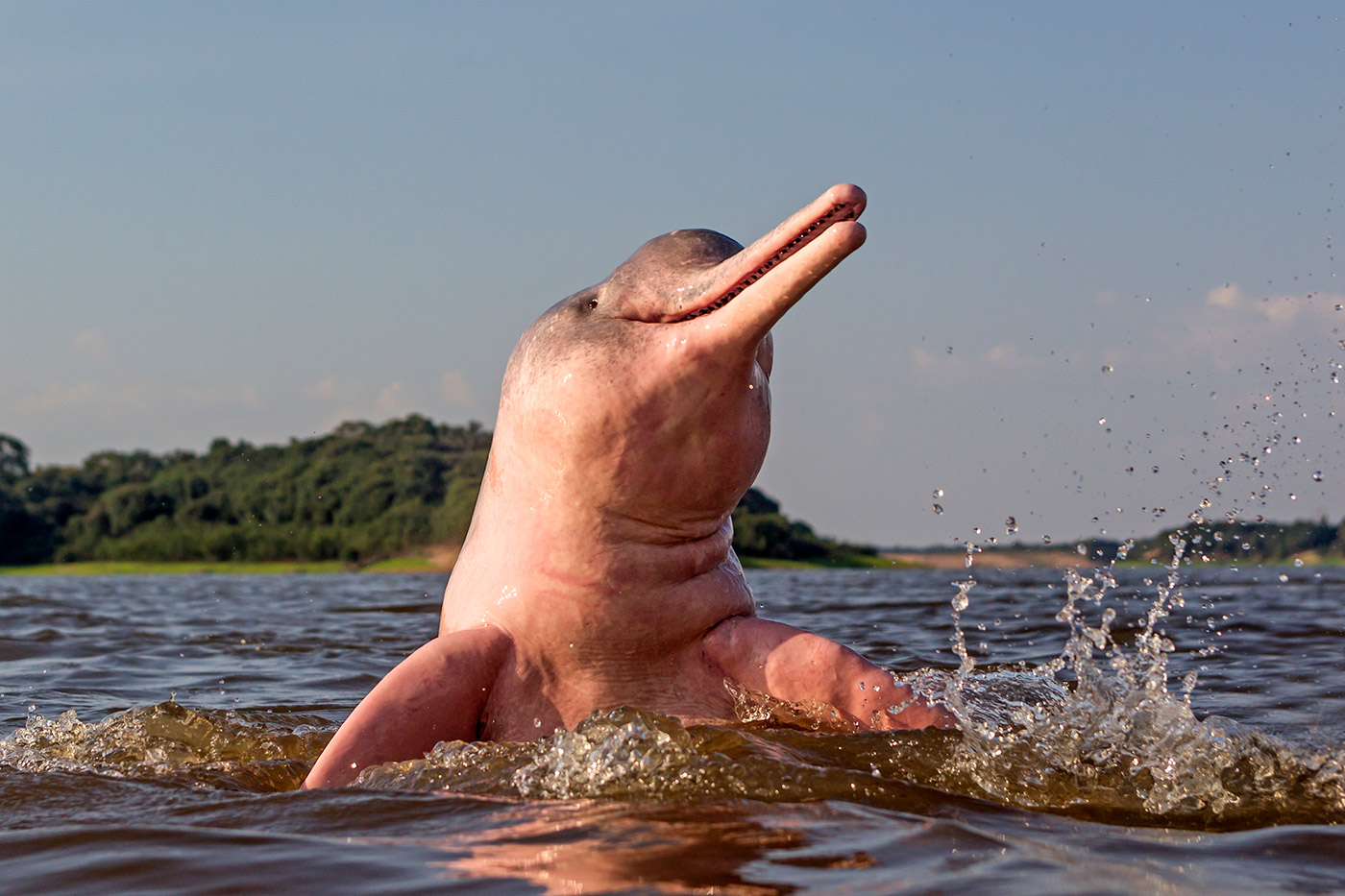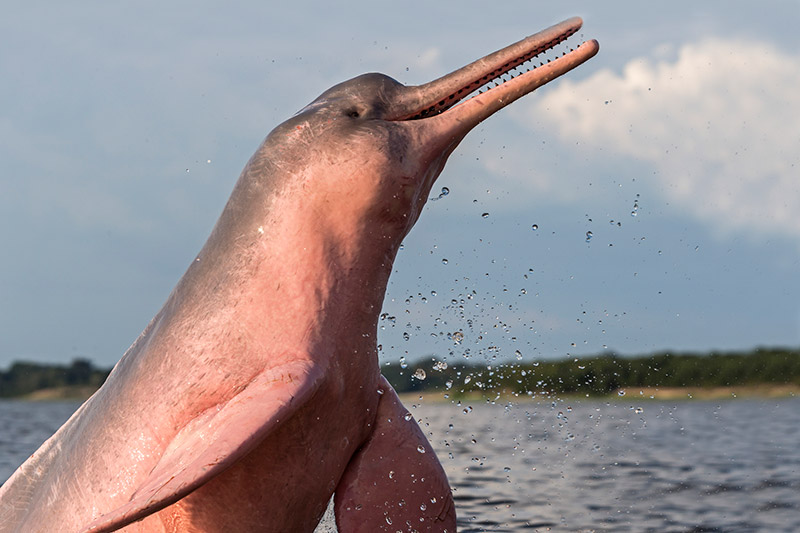Amazon river dolphin
(Inia geoffrensis)

Subspecies in the Amazon River, Madeira River, and the Orinoco River basin
About me
We go with the flow! That’s because river dolphins like us live cyclically — moving depending on the water levels that change from the dry to the rainy seasons. Because we’re restricted to river waters, we’re really vulnerable to habitat destruction from sources like water contamination from mining, agriculture or damming.

Fast Facts: Did you know?
We’re smart and have big brains (even a little bigger than yours!), but the bump on our forehead is called a melon. No, not like a watermelon, it’s actually a lump of fatty tissue that focuses the pulses that we use for echolocation — to “see” what’s underwater! And we can even change its shape!
It’s finally time to answer the question: Why are we pink? Well, Amazon River dolphins like me are actually born all gray, and we turn pink over time! It’s not perfectly understood: several causes have been studied, like how close our blood flows to the skin, scar tissue from fighting and scraping, and the pigments present in our wide-ranging diet. So for now, we’re keeping it a secret!
The rainforests of the Amazon, Congo, and Indonesia are our last best line of defense against the biodiversity and climate crisis. But 17 corporations are making massive profits by driving their destruction and the violation of human rights. That has to end NOW.
Why I want to Keep Forests Standing
You might wonder why a dolphin cares so much about trees? But without forests, our river homes are vulnerable to degradation and pollution. The weather and structure of the river basin is defined by the interdependence of the Amazon Rainforest and the river. The health of the forest goes a long way towards making sure our freshwater stays… fresh!



 Subspecies in the Amazon River, Madeira River, and the Orinoco River basin
Subspecies in the Amazon River, Madeira River, and the Orinoco River basin










